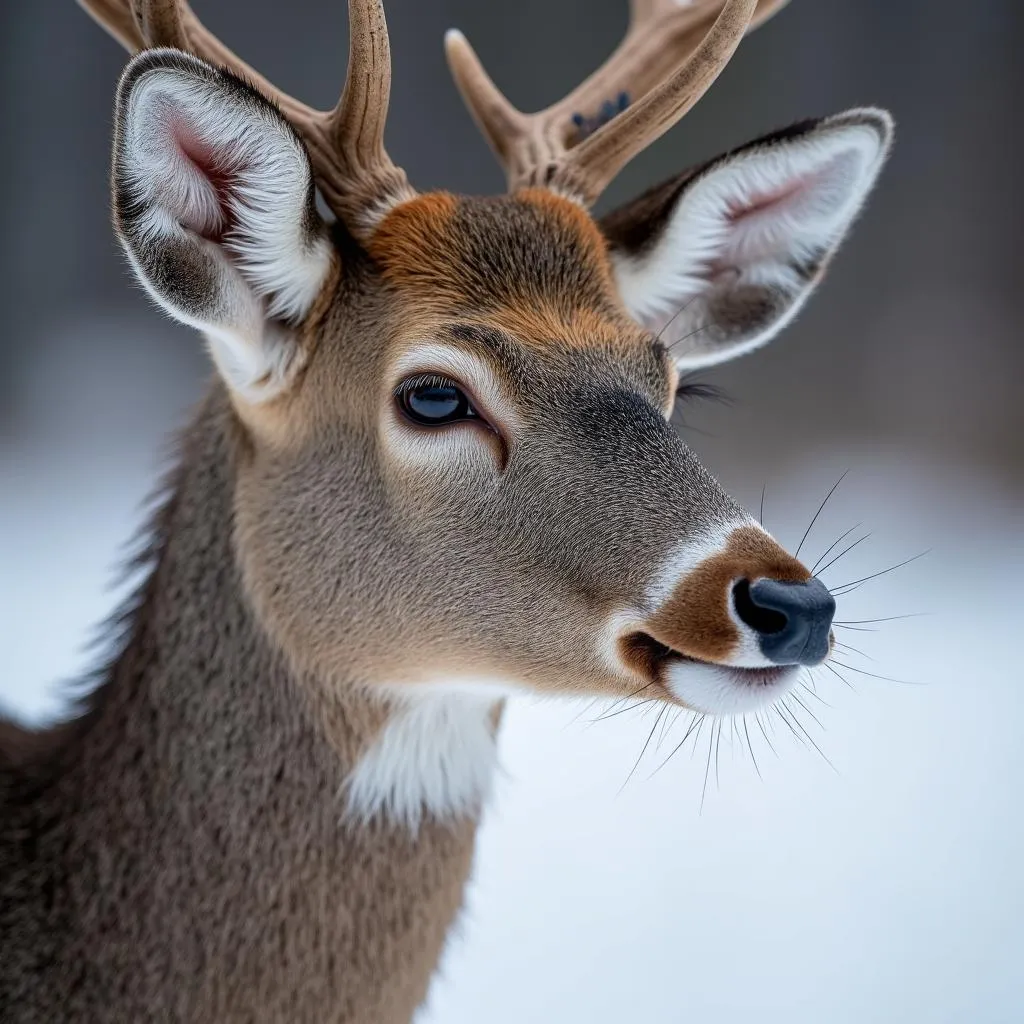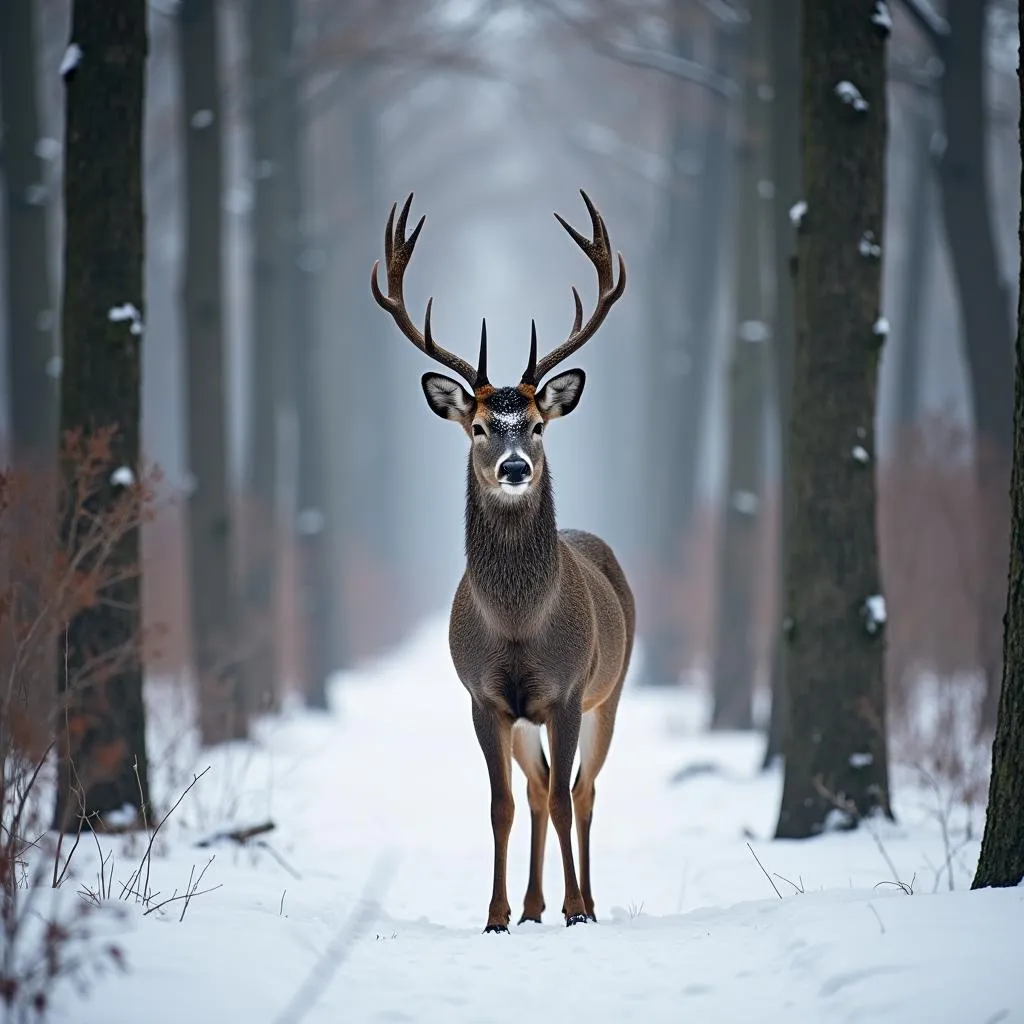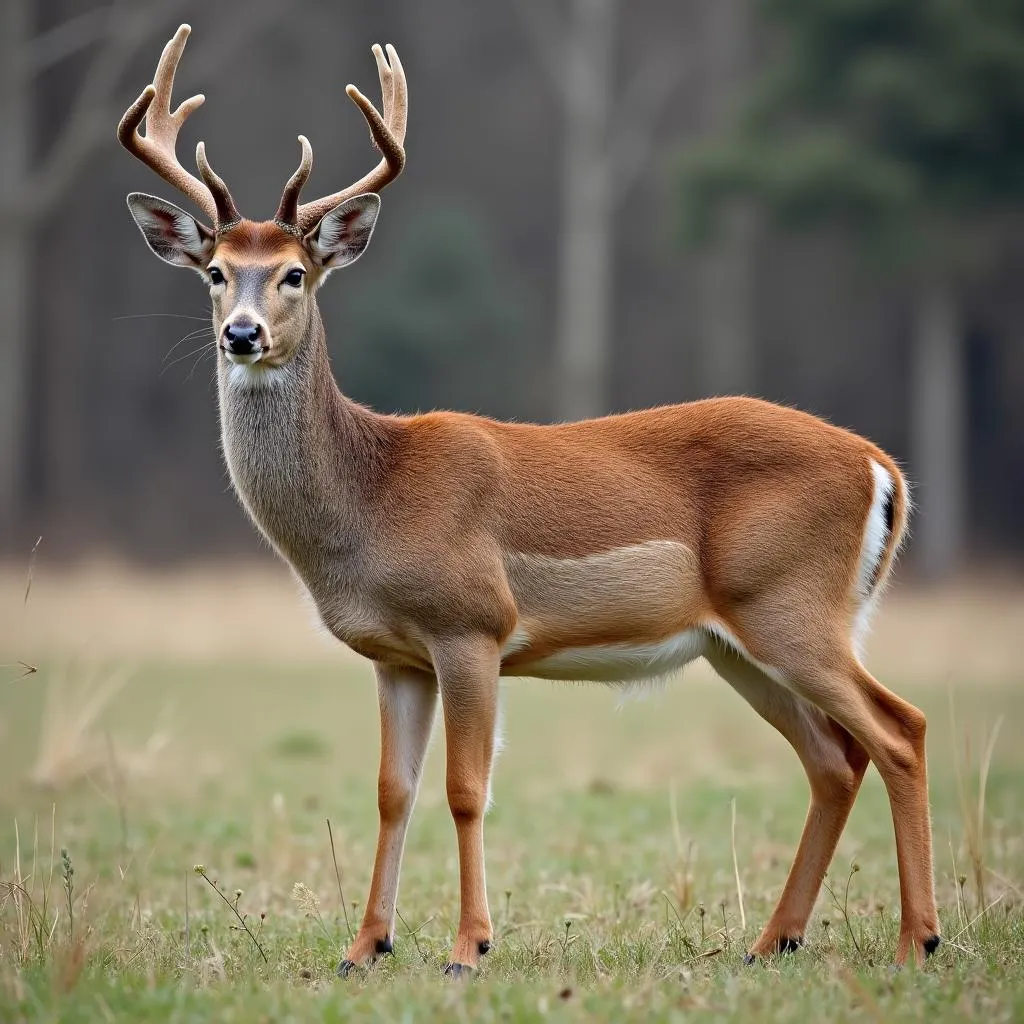Deer are iconic symbols of the fall season, often depicted against a backdrop of vibrant foliage. However, contrary to popular belief, deer themselves don’t undergo a color change in autumn like some of their woodland counterparts. Their coat transformation is more subtle and driven by practical reasons rather than aesthetic ones.
It’s Not About the Color, It’s About the Coat
Instead of changing color, deer transition to a winter coat. Throughout the summer, they sport a reddish-brown coat made up of short, thin hairs. As the weather cools, they shed this summer coat and grow a thicker, more insulating winter coat consisting of longer, hollow hairs. These hollow hairs trap air, providing excellent insulation against the cold temperatures.
 White-tailed deer with thick winter coat
White-tailed deer with thick winter coat
The Science Behind the Shift
The change in a deer’s coat is triggered by the decreasing daylight hours as summer transitions to fall. This shift in daylight affects the pineal gland, which regulates melatonin production. Increased melatonin signals the deer’s body to start growing their winter coat.
Shades of Adaptation
While the change isn’t as dramatic as the leaves changing color, the deer’s winter coat does appear different from their summer coat. The new fur is typically a darker shade of brown or gray, helping them blend in with the muted tones of the winter landscape. This camouflage is crucial for their survival, providing protection from predators.
 Deer camouflaged in winter forest
Deer camouflaged in winter forest
More Than Just Warmth
The change to a winter coat offers more than just warmth; the hollow hairs also help deer stay buoyant in snowy conditions. This is particularly beneficial in areas with deep snow, allowing them to navigate challenging terrain more easily.
A Gradual Transformation
The process of changing coats is gradual and can take several weeks. During this time, you might see deer with a patchwork appearance as they shed their summer coat and their winter coat grows in.
 Deer shedding summer coat in patches
Deer shedding summer coat in patches
Fascinating Facts about Deer Coats:
- Fawns have spotted coats that provide excellent camouflage during their first few months of life.
- The thickness and color of a deer’s winter coat can vary depending on the severity of the winter in their region.
While deer might not display the vibrant hues we associate with fall, their subtle coat transformation is a fascinating adaptation that ensures their survival throughout the colder months.

